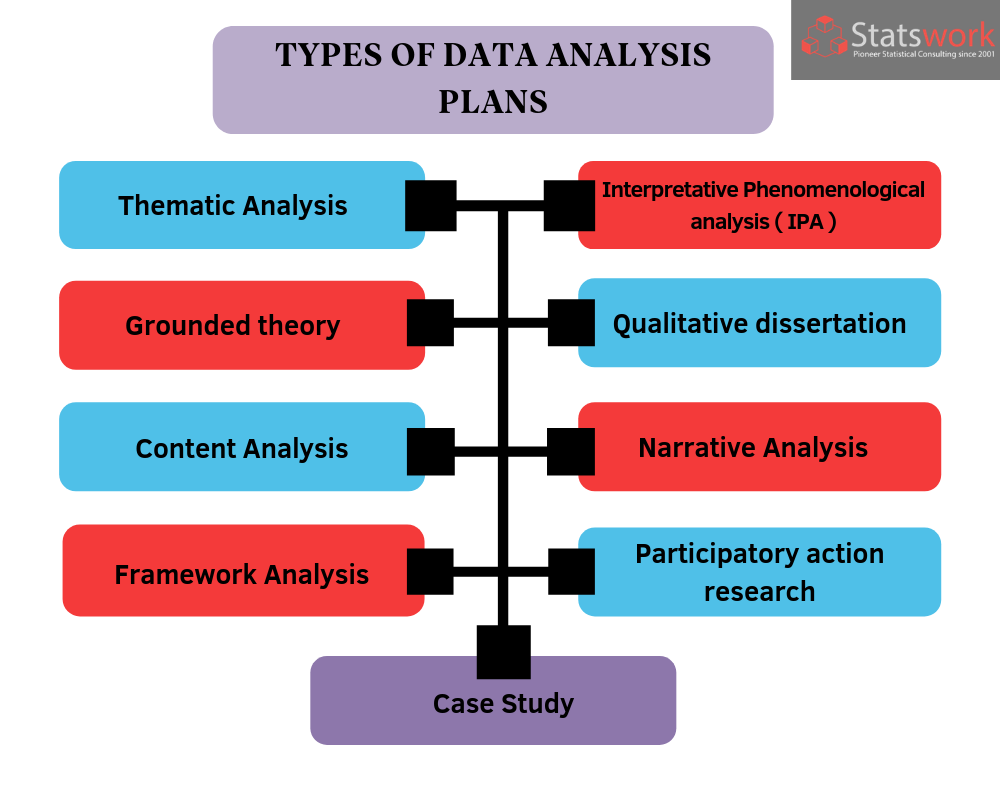CHOOSING A QUALITATIVE DATA ANALYSIS (QDA) PLAN
Data Analysis should change what you do, not just how you do it. – Matin Movassate If you are to choose the right data analysis plan for your study, it is first pertinent to collect qualitative data. Since Qualitative analysis is more about the meaning of the analysis, it is too confusing with unstructured and huge data. For conducting Data Analysis for any research, it is also important to have the right methodology. If the data and methods of data analysis plan are right, it will have numerous benefits, including taking the right decisions. But before that, there are certain fundamental details to know before choosing the right data analysis plan, which includes:

What is qualitative data analysis?
QDA is based on interpretative policy to examine the symbolic and meaningful content of data. In other words, it is interpreting the qualitative data by many processes and procedures to transform them into great insights for taking dynamic decisions.
What is qualitative data?
Descriptive data that are non-numerical and capturing concepts and opinions, values and behaviors of people in a social context is called Qualitative data Collection. It is the data from observation of audio and video recordings and also reading the transcripts of interviews and copies of documents.
What purpose does the qualitative data analysis plan perform?
Unlike Quantitative data analysis, which is more of numbers and statistics, qualitative analysis is analysis of subjective and non-numerical qualitative data. Hence it performs many functions including:
- Organizing data
- Interpreting data
- Identifying patterns
- Forming the basis for informed and verifiable conclusions
- Ties research objectives to data
After knowing the above fundamentals of Qualitative data analysis, it is time to choose the right data analysis plan. The plans can be selected for specific research design and can also be applied for a variety of research designs.
The different types of data analysis plans:
Thematic Analysis (TA)
TA is a flexible and non-research design specific data analysis plan. It generates themes from interview data and is useful in case studies, phenomenology, and generic qualitative and narrative analysis, among others. If you are a novice researcher, looking for an easy to follow analysis plan and rigorous enough to generate meaningful findings, TA is the right choice.
Interpretative Phenomenological Analysis (IPA)
For the phenomenological research study, IPA is the right choice. It brings out the core of the phenomenon under review. Other plans like Moustakas‘ Modified Van Kaam, Colaizzi, Giorgi, and Heuristic analysis also help to study phenomenological research. Even TA can be used, and the ultimate aim and focus should be to generate meaningful results.
Grounded theory
Unlike TA and IPA, the grounded theory uses specific data analysis plan. It requires you to use the analyzed data concurrently and applying constant comparison method of analysis. It is because of its utilization of theoretical saturation. It goes beyond adding to the existing knowledge and developing a new theory about a phenomenon grounded on data.
Qualitative dissertation (QD)
QD is the most effective of all other types of other plans and it is used in market research.
Content Analysis
The qualitative content analysis draws realistic conclusions after organizing and obtaining elicit meaning from the data. You have to choose manifest analysis for broad surface structure or latent analysis for the deep data structure. It involves four major stages, which include:
- Decontextualization
- Recontextualization
- Categorization
- Compilation
Narrative analysis
Narrative analysis focuses on different elements to make diverse but equally substantial and meaningful interpretations and conclusions. It is a genre of analytical frames used by researchers to interpret information with the context of research shared by all in daily life.
Discourse analysis
Also known as discourse studies, is a broad term for studying the ways of how people use language. It is the approach to analyze written texts, spoken contexts, sign language, and significant semiotic event. Its objective is defined in terms of coherent sequences of sentences, propositions, speech, or turns at talk.
Framework analysis
Framework analysis assesses policies and procedures from the same people that they affect. In this analysis, the data is shifted, charted, and sorted in accordance to answer researches that have specific questions to answer with a limited time frame and a predesigned sample of prior issues. Framework analysis uses five steps, including:
- Familiarization
- Identifying a thematic framework
- Indexing
- Charting & mapping
- Interpretation
Participatory action research (PAR)
PAR enhances collective inquiry among the communities concerned as an approach to research them. It also emphasizes participation and action among them.
Case Study
The case study qualitative analysis plan has evolved over the last few years into a vital tool useful for investigating trends and specific situations in a lot of scientific disciplines. It is of great use to test theoretical models by using them in real-time world situations. It does an in-depth and detailed study of an individual or a group of them to provide their narrative descriptions of behavior or experience. Choosing from the above several qualitative analysis plans will help to do and write the research effectively and also having fun doing it. But if you need further help contact professional help for choosing the appropriate qualitative analysis plan for your research.


